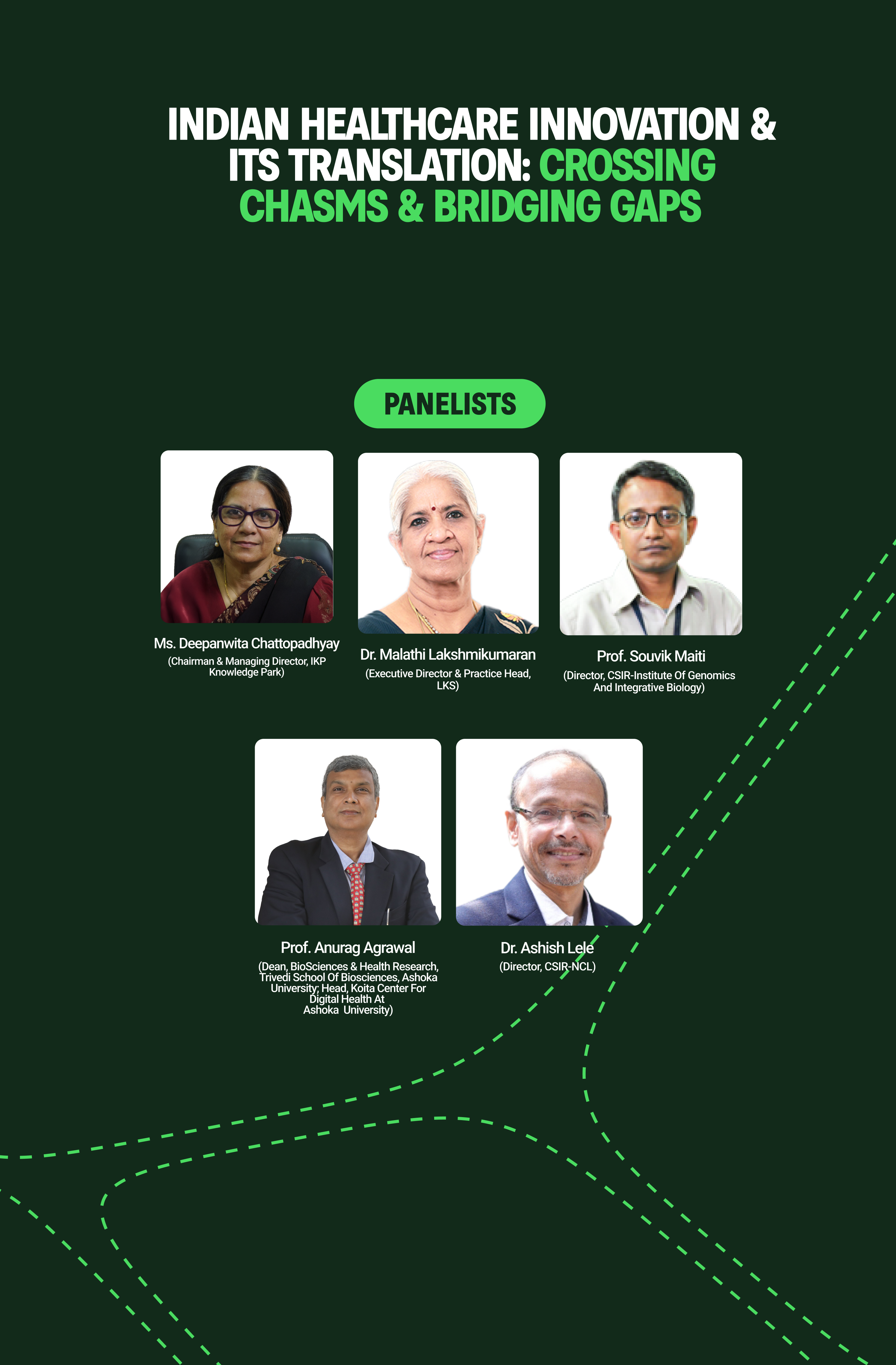


summary
The panel on Indian Healthcare Innovation: Crossing Chasms and Bridging Gaps emphasized that India’s greatest strength lies in developing world-class solutions for low-resource settings, where innovation is driven by necessity but never at the expense of quality. Panelists noted that while Western biomedical advances may benefit 1.5 billion people, it is the remaining 7 billion who will gain most from India’s contextual, frugal, and scalable innovations. Rather than focusing only on low-cost versions of Western technologies, India must aspire to create “first-in-the-world” products that deliver more value to more people at lower cost. Achieving this vision requires stronger intellectual property generation, greater R&D investment, and deeper collaboration across science, industry, medicine, and policy. AI, public health data, and the country’s genetic diversity were highlighted as essential tools to reimagine primary healthcare, embed equity, and position India as a leader in biomedical translation by 2047.
At the same time, the discussion acknowledged persistent structural barriers. Despite abundant infrastructure, India’s R&D spending remains limited, and innovation ecosystems often function in silos. Bridging the “valley of death” between early-stage research and industry-ready products will demand new institutions, akin to Fraunhofer, that can mature academic innovations with robust IP into scalable solutions. Incubators must evolve into platforms for skill-building and coaching, while multidisciplinary education and AI-driven design tools are needed to nurture the next generation of innovators. To unlock this potential, panelists urged policymakers to ease research regulations, reform IP laws, amend the National Biodiversity Act, and reduce bureaucratic hurdles, while ensuring scientists remain focused on science and socially responsible mentorship. The panel concluded that true progress will come from innovation for India, in India—anchored in equity, accessibility, and global relevance.
Key takeaways
• Enable scaling and translation
• Create new institutions (Fraunhofer-like) to bridge the “valley of death” between lab research and industry-scale products.
• Support technology readiness transitions (TRL 2–4 to TRL 8–9) with funding and infrastructure.
• Promote multidisciplinary education & talent development
• Encourage cross-disciplinary courses to train innovators who can question, connect, and problem-solve.
• Empower incubators to focus not only on funding but also on training, upskilling, and coaching.
• Leverage AI and data
• Develop AI tools for design and innovation, beyond standardizable tasks.
• Use India’s public health data and genetic diversity to create context-specific solutions.
• Policy and ecosystem reform
• Ease regulatory hurdles for research and clinical translation.
• Amend the National Biodiversity Act to support biomedical innovation.
• Reduce bureaucratic barriers and keep scientists focused on science.
• Build collaborative platforms
• Foster convergence between scientists, industry leaders, clinicians, and policymakers.
• Institutionalize the idea of each scientist mentoring at least one innovator.
.png)
